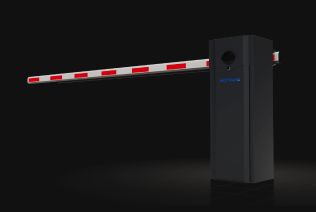Data Center Safety 101: How to Train Employees on the Use of Mantraps and Flap Barriers

Introduction
In today’s data-driven world, data centers are the backbone of many businesses. Protecting sensitive information and ensuring data center security is critical for both the company and its clients. One way to achieve this is by implementing physical security measures like mantraps and flap barriers. These systems help control access to secure areas, but their effectiveness depends on proper training for your employees. In this blog post, we will discuss the importance of mantraps and flap barriers and outline a comprehensive training plan to ensure your team knows how to use them effectively.
Understanding the Basics: Mantraps and Flap Barriers
Mantraps are physical access control systems designed to prevent unauthorized entry into sensitive areas. They consist of a small room with two interlocking doors, where only one door can be open at a time. This system ensures that individuals entering the secure area must pass through a verification process before gaining access.
Flap barriers, on the other hand, are a type of turnstile commonly used at the entrances of data centers. They consist of retractable flaps that allow passage only after an authorized access card has been presented. They are an efficient way to regulate the flow of people while ensuring only authorized personnel can enter.
Training Plan for Mantraps and Flap Barriers
- Start with awareness training: The first step in your training plan should be to make employees aware of the importance of data center security and the role of mantraps and flap barriers in maintaining it. Explain the potential risks associated with unauthorized access and the consequences for the company and its clients.
- Explain the system components: Provide a detailed overview of the mantrap and flap barrier systems. Explain how they work, their components, and their purpose. This will give employees a clear understanding of the mechanisms involved and the reasons behind their implementation.
- Demonstrate correct usage: Conduct hands-on demonstrations of how to correctly use both the mantrap and flap barrier systems. Show employees how to present their access cards, enter the mantrap, wait for the doors to lock and unlock, and pass through the barriers. Encourage employees to practice using these systems under supervision until they are comfortable with the process.
- Emphasize security protocols: Teach employees the importance of following security protocols when using mantraps and flap barriers, such as not holding doors open for others or sharing access cards. Reinforce the need for vigilance in reporting suspicious activity or potential security breaches.
- Regular drills and refresher courses: Schedule periodic drills and refresher courses to ensure employees remain knowledgeable about the proper use of mantraps and flap barriers. These drills can also help identify any weaknesses in your security protocols and provide opportunities for improvements.
- Simulate emergency scenarios: To prepare your employees for potential emergencies, simulate scenarios where they must use mantraps and flap barriers under pressure, such as during a fire alarm or a security breach. This practice will help employees react calmly and efficiently during a real emergency.
- Train employees on troubleshooting: Teach employees basic troubleshooting techniques for mantraps and flap barriers, such as resetting the system or checking for physical obstructions. This will enable them to quickly address minor issues and reduce downtime.
- Establish clear lines of communication: Ensure employees know who to contact in case of issues or emergencies related to mantraps and flap barriers. This includes the security team, IT department, facility management, and subsequently the vendor’s point of contact. Clear communication channels are essential for rapid response and resolution of problems.
- Incorporate training into onboarding: Include mantrap and flap barrier training as part of the onboarding process for new employees. This ensures that everyone entering the data center is well-versed in using these systems and adhering to security protocols from day one.
- Encourage a culture of security: Foster a culture of security within your organization, where employees understand their role in maintaining data center security and feel responsible for its success. Encourage open communication, peer-to-peer training, and the sharing of best practices to ensure that all employees are engaged and committed to data center security.
Conclusion
Implementing mantraps and flap barriers in your data center is an effective way to enhance security by controlling access to sensitive areas. However, their success depends on the proper training of employees in their use and the adherence to security protocols. By following the comprehensive training plan outlined in this blog post, you can ensure that your team is well-equipped to use mantraps and flap barriers effectively and maintain a high level of data center security. Additionally, Motwane’s team of trained experts on Physical Security Systems is available on call to support training and demo needs.



